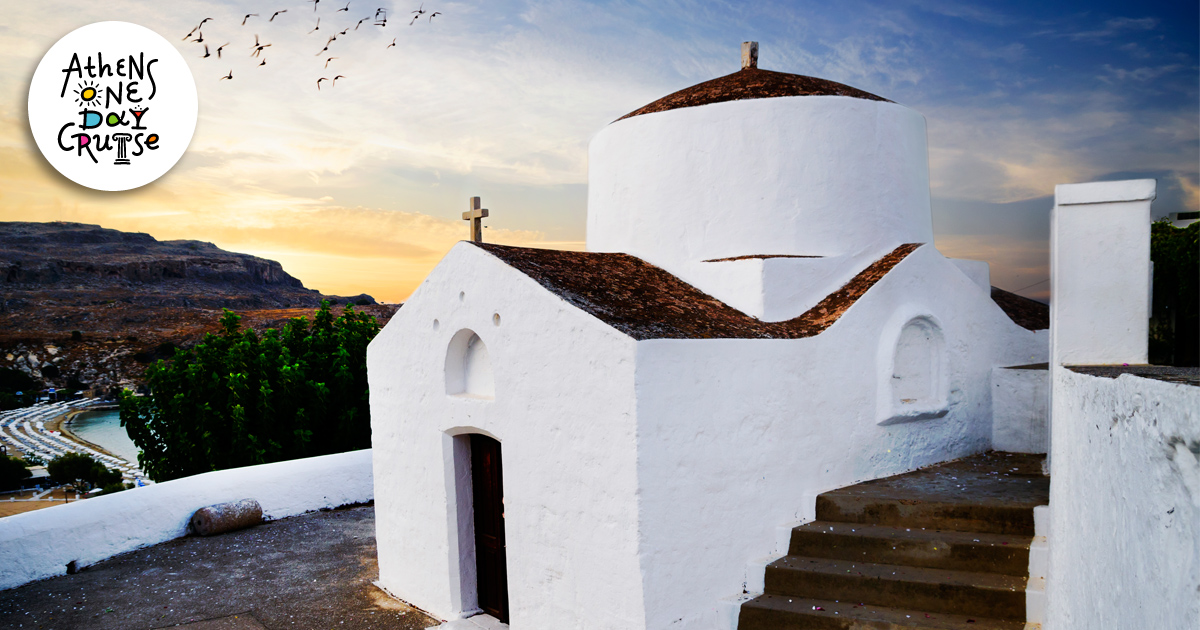
Religious tourism in Aegina - Everything you need to see
If you like religious tourism, Aegina is a destination rich in ecclesiastical and Christian interest. With 14 parishes, 7 monasteries that reveal the intense monastic climate of the island and major local religious holidays, Aegina celebrates most days of the year.
Religious tourism in Aegina at a glance:
In Aegina you can find many scattered basilicas from the early Christian era and Byzantine churches. The medieval Paleochora is also of special importance. It is a post-Byzantine settlement on a hill, which was the religious center of the island. It is located shortly after the Monastery of Agios Nektarios and has scattered 40 small churches.
Starting from the Monasteries:
- The Monastery of Chrysoleontissa or Monastery of the Assumption of the Virgin Mary was built in the 13th century and moved two centuries later to the place that is today in the center of the island. It looks like a fortress and is built according to the traditional monastic architecture of Mount Athos. It has ten chapels. To it belongs the Metochi of Faneromeni outside the city of Aegina in the direction of Agios Nektarios.
- The nunnery of Agia Aikaterini. It was built in the early 20th century and is known for its miraculous image. It has rare relics and relics of saints and is located near the Monastery of the Holy Trinity.
- The Monastery of Agios Minas. It has three chapels and you will find it drowned in the pines southwest of the Temple of Aphaia Athena.
- Next is the Monastery of Agia Anastasia the Pharmacologist. In the area of Chloi in the northwest of the city of Aegina. It celebrates on December 22.
- The Monastery of Panagia Eleftherotria. It is located in the village of Vathi. It is smaller in size than the other monasteries and has been operating since 1987.
- The Monastery of Genesis of the Virgin or the Monastery of Agios Christoforos at the northeastern tip of the island. It celebrates twice a year, on September 8 and May 9. In it is also the relic of the Saint.
The Monastery of Agios Nektarios
- The Monastery of Agios Nektarios holds a special place in Aegina. It is not just another monastery, but it is a center of worship of national scope. It is also known as the Monastery of the Holy Trinity overlooking Paleochora. It has four chapels and together with the new church of Agios Nektarios holds the title of the religious center of Aegina. It was built by Saint Nektarios himself. In the middle of the complex is the church of the Holy Trinity and to its south the tomb of the Saint. The new church has been operating since 1994 and is one of the largest Orthodox churches today in size and importance, as long as one has a capacity of 9000 people.
Churches:
- The Great Church, otherwise known as the Metropolitan Church of Aegina, is perhaps the first attraction for those visiting the island for religious reasons. It has a historical role since the first Greek government was sworn in in 1828 after the liberation struggle, when Aegina held the title of the capital of the Greek State.
- Last but not least with the Diocese is the patron saint of Aegina, Saint Dionysios. The patron saint of the island which is celebrated with great honors every year on December 17.
Tags: Religious Tourism

